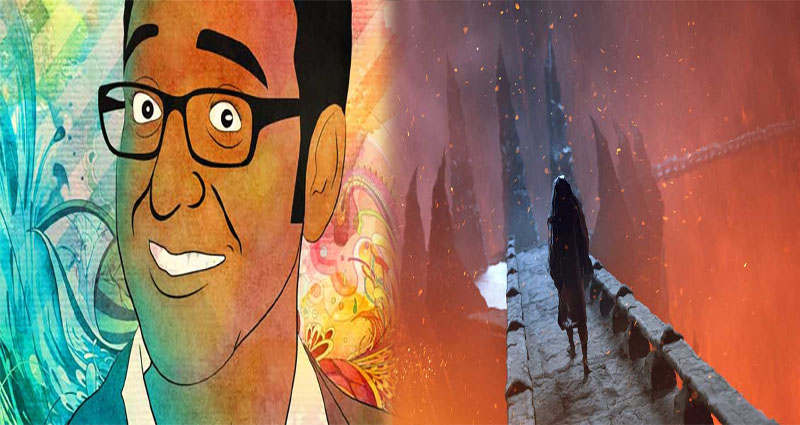Motion graphics artists are a type of animator who work with moving video and images. They create animations, video graphics, or other moving content for a variety of purposes such as television commercials, educational videos, and music videos. A motion graphics artist uses computers to create these videos and works with software like Adobe After Effects and Maya 3D animation software. Motion graphics artists also have to be able to do things like storyboard their animations before they start working on them so that they can make sure everything fits together properly before starting on any actual production work.
What is motion graphics?
Motion graphics is the process of creating graphics that move. It’s used in film, TV, advertising and video games to name just a few applications. Motion graphics artists use software like After Effects or Cinema 4D to create these animations; however there are also many other tools available for the job including stop-motion animation or even hand-drawn animation (if you’re feeling particularly old school).
How did you get started in motion graphics?
I got started in the industry by doing freelance work for clients, who then referred me to other people and so on. At first I would just do simple things like animations and logos, but as time went on I was able to take on bigger projects that required more skills.
My first project was creating an animated logo for a new company called “The Feline Foundation,” which helped animals find homes. It was a fun project because it wasn’t something I’d done before; I had to learn how to animate cats and dogs! The client loved our finished product so much that they wanted us to do another one for their website–and that’s how we got started!
What are some of the skills that are needed to be a motion graphics artist?
- Creativity. You need to be able to come up with ideas and solutions that are both original and effective.
- Problem Solving Skills. If you’re working on a project, there will undoubtedly be challenges along the way–you have to be able to solve these problems quickly so that your team can keep moving forward with their work.
- Communication Skills. It’s important for motion graphics artists to be able to clearly communicate their ideas with other members of their team as well as clients or managers who may not know much about motion graphics (or anything else).
- Time Management and Multitasking Skills: Motion graphics projects require many different steps, which means it’s essential for motion graphics artists’ schedules stay organized throughout the entire process from start-to-finish
What type of equipment do you use? How much does it cost?
The equipment you use depends on the type of motion graphics you do. For example, if you’re a professional who works in high-end CG animation and VFX (visual effects), then obviously your setup will be quite different from someone who does simple animated GIFs for social media.
If you’re just starting out as a motion graphics artist, it’s best to use free software like GIMP and Inkscape until you’ve gotten the hang of things before investing in expensive tools like Cinema 4D or After Effects.
How much money do motion graphics artists make? Is it enough to make a living off of it?
The answer to this question depends on the type of work and company you’re working for. A motion graphics artist can make a good living, but it’s definitely not enough to live off of if you’re just starting out in the field. If you work hard enough, though, you may be able to grow your career into something greater than what you’d expect from just being an employee at any company–and that could lead to earning more money over time!
But let’s start with some numbers: According to Glassdoor (which collects information about salaries), the average annual salary for a Motion Graphic Designer is $65k-$80k per year ($31-37/hour). But those are just averages; there are plenty of people making more than this amount every year because they’ve worked hard enough at their craft that they’re getting hired by bigger companies with higher paychecks attached!
Do you have any tips for new motion graphics artists just starting out in the industry?
Do your research.
If you’re just starting out and want to get into motion graphics, there are plenty of resources available on the internet that will teach you the basics of After Effects and Cinema 4D. Some of these include Lynda tutorials, YouTube channels like Design School (which focuses on Cinema 4D) and MotionWorks (which specializes in After Effects), and online classes from Udemy. If you can’t afford any of those options, try asking friends who are familiar with these programs for advice or tutorials they’ve made themselves!
Get a mentor/mentor yourself someone else who wants to learn but doesn’t know where to start either – this will keep both parties motivated while providing them with valuable feedback along the way. If nothing else it’ll help pass some time when waiting around during shoots 🙂
Motion graphics can be a fun way to make a living if you’re creative.
- You need to be creative.
- You need to be good at problem solving.
- You need to be able to work with clients and other people, both in person and remotely.
Motion graphics is a fun way to make a living if you’re creative. You can get started by learning the basics with some online tutorials, then apply for jobs at local studios or agencies who need help with their projects. If all goes well, you might even end up working on an animated short film!











